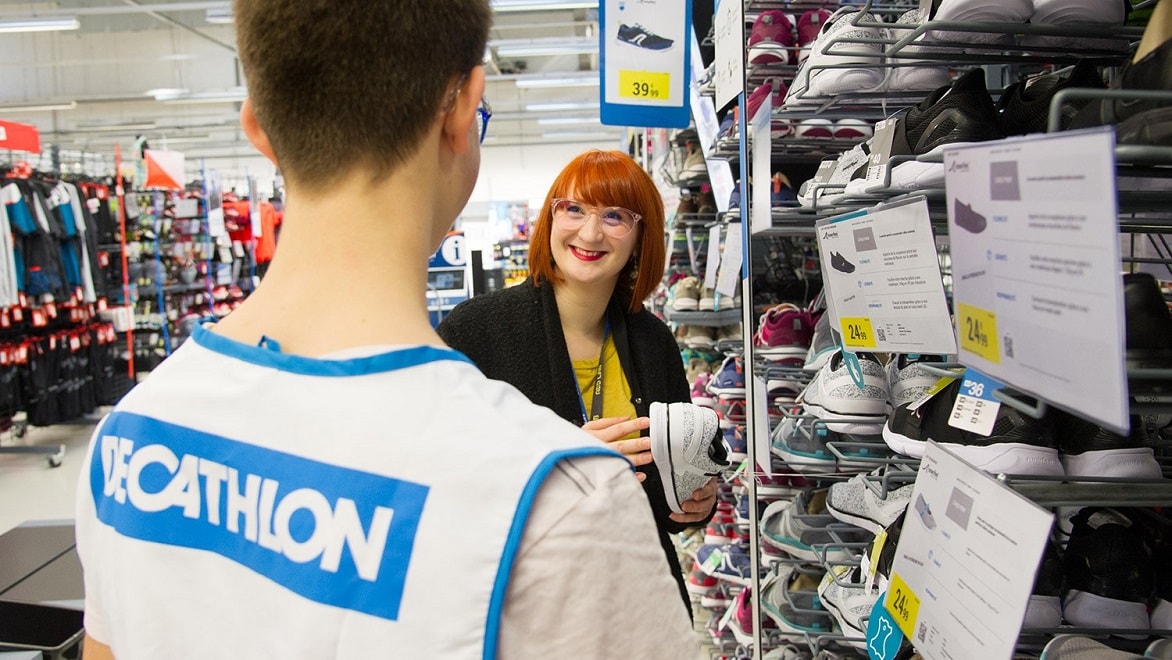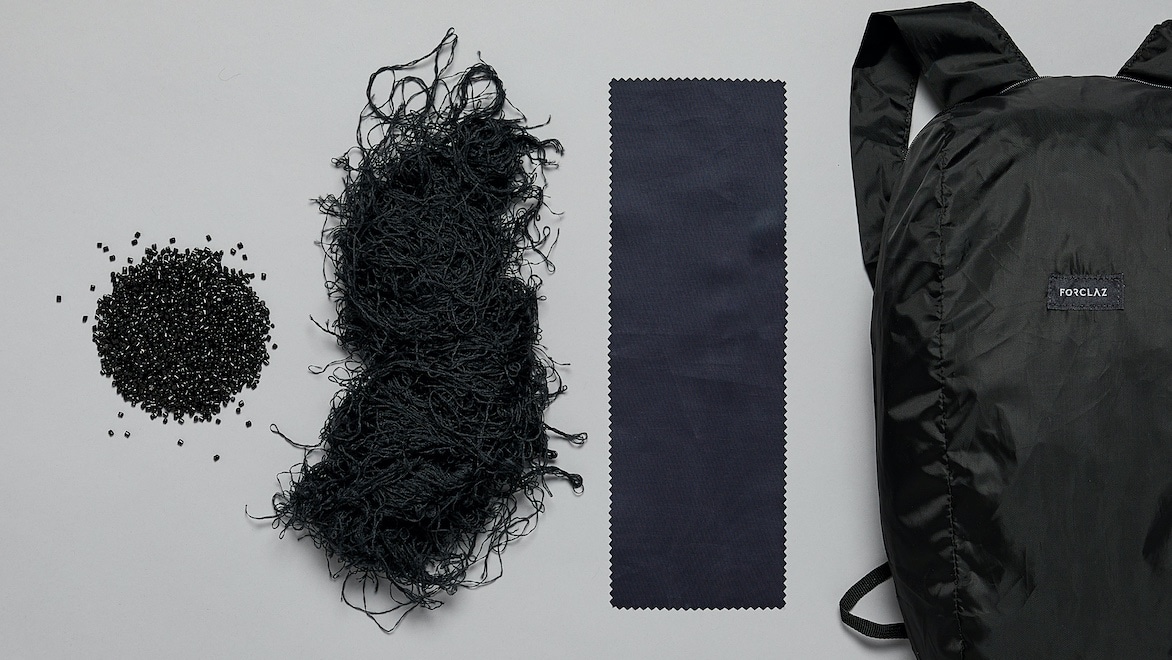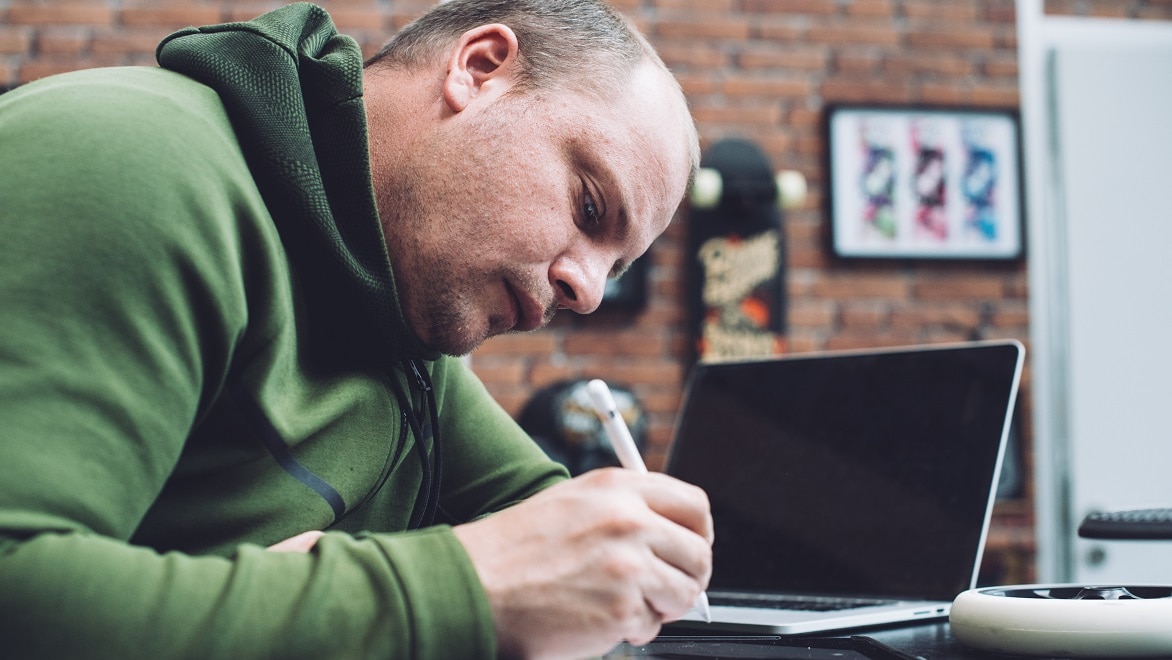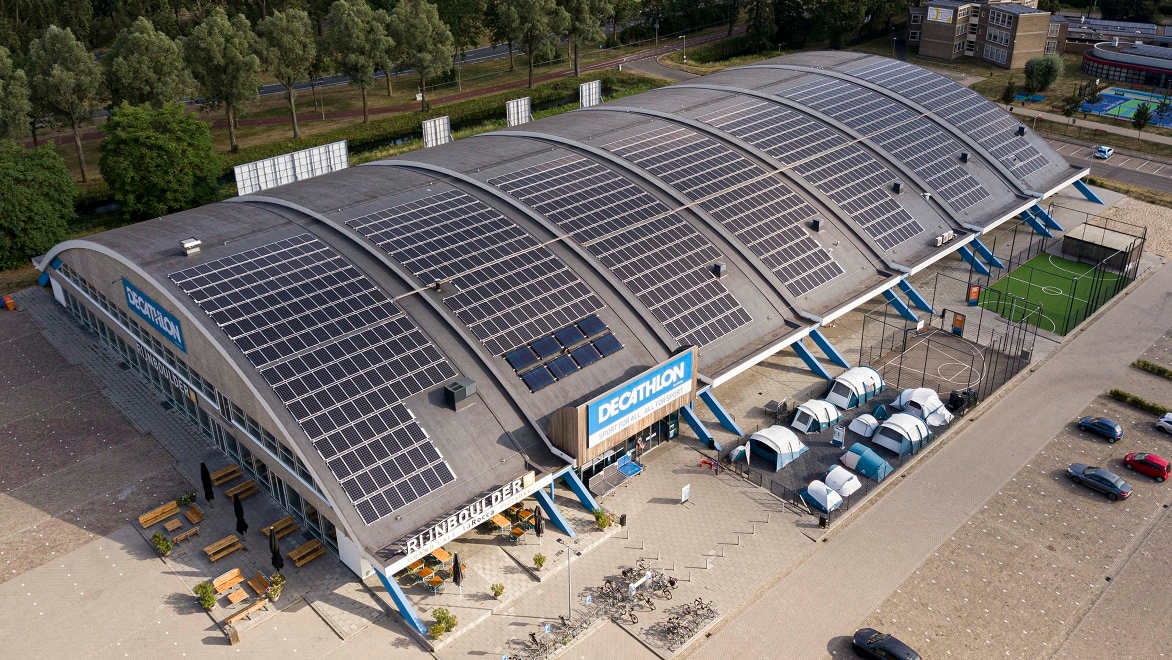DECATHLON
Digitization helps a global sporting goods company chart the path to sustainability
STATE OF DESIGN & MAKE
Share this story
Embracing technology and innovation to support the planet—and transform design and manufacturing
To reach its ambitious 2026 sustainability goals, global sporting goods giant Decathlon is using technology solutions to adopt sustainable product design and development practices, transform products and operations, and manage the supply chain. In the process, the company is reducing waste, cutting costs, and winning loyalty from customers who make purchase decisions based on what’s good for the planet—showing how sustainability efforts can help companies not only meet their environmental goals but also drive business value.

Decathlon designs and manufactures products for dozens of sports, constantly working to innovate its offerings to ensure they're both sustainable and affordable. Image courtesy of Decathlon.
Achieving sustainability is a team effort
Decathlon, a leading global sporting goods designer, producer, and retailer, places sustainability at the core of its values as a sports company—to ensure that its activities do no harm to “our shared playground.”
The company’s 10-year sustainability plan aims to reduce its absolute greenhouse gas emissions (tCO2e) from stores and warehouses by 90%, cutting direct and indirect emissions by 2026 from a 2016 base year. Other 2026 goals include reaching 100% renewable electricity consumption in stores and warehouses, 100% of products designed to reduce their ecological impact, and 100% of repairable products repaired either by Decathlon’s workshops or its customers. That might seem ambitious, but Decathlon is proving that creating a culture that embraces innovation and technology puts lofty sustainability goals well within reach—and that those goals can intersect with long-term business benefit.
“Sustainability is the major priority,” says Charles Cambianica, advanced design project leader at Decathlon, “but we already know that eco design is not enough. We must strive for eco innovation—which means reinventing the way we are doing business, reducing not just CO2 per product, but the global CO2 footprint of the company.”
In fact, more and more business leaders around the globe, representing companies that design and make places, objects, and experiences, recognize the business case for sustainability. In Autodesk’s global research report 2023 State of Design & Make, 80% of respondents reported that improving sustainability practices is a good long-term business decision, and that same percentage said that customers are pressuring them to define and meet sustainability goals.
“It’s not just the material that has to change,” says Cambianica, “it’s also our way of designing, because our goal is to reduce the carbon footprint of all of our products. When compared to the previous way of doing things, the company has had to go back to square one for each process.”

Decathlon owns more than 1,700 stores around the world, part of a vertical business operation that gives the company greater control over the supply chain and enables it to manufacture products closer to the customer. Image courtesy of Decathlon.
The vertical advantage
Decathlon, which has a presence in more than 70 countries, was born in the summer of 1976 when a group of sports enthusiasts decided to open a store where people could find all sports under one single roof. The Decathlon brand, which is now recognized worldwide, first appeared on a metallic gray bike. From there, the company’s path to digitization began with some important organizational antecedents.
For decades, the company has maintained tight control of its supply chain, and with good reason, says Cambianica. In its early years, Decathlon grew at impressive speed. While customer demand increased, difficulties in obtaining bike parts from distributors quickly led to delays. To avert further impact on the customer experience, the company took control of its supply chain. It estimated (correctly) that designing, testing, and building every product in-house would bestow the competitive advantage of greater control over production speed and quality—and unlock a deeper understanding of customers’ needs and pain points.
“We work very hard to try to create an ecosystem in which our products are produced as close to the customer as possible,” Cambianica says. “This is something that has had a big impact on the supply chain. If you want to produce closer, then you need the industrial footprint to do so.”
Today, the benefits of that early decision have come to fruition. Decathlon now owns more than 1,700 stores around the world and employs 105,000 people in an operation that spans dozens of sports units, each with their own R&D budget and charge, unified around three pillars: performance, price, and respect for the environment. “In one way or another, the topic of sustainability is prevalent in every single one of those units,” Cambianica says.

Decathlon’s use of sustainable materials includes recycled polyester created from plastic bottles that are melted down, extruded as yarn, and woven into fabric that's used for products such as backpacks. Image courtesy of Decathlon.
Material choices are just the beginning
In addition to his role as an advanced design project leader, Cambianica also serves as design director for the company’s wellness, running, and walking division—overseeing several projects at the cusp of the company’s two-pronged effort to boost sustainability as it embraces design software. “Today, there are a lot of different initiatives about CAD modeling or digital creation using a lot of different applications, and sometimes it’s not easy to align the pipeline,” Cambianica says. “I think we need to go further on standards and establish the backbone of the digital chain, because we know that when we do it right, it creates a lot of benefits.”
Topping the list is the reexamination of Decathlon’s shoe design strategy. To create uppers and midsoles for some of its footwear lines, a team led by Cambianica is experimenting with “mono materials” like thermoplastic polyurethane (TPU).
In the marketplace today, many shoes made from recycled materials are branded as eco-friendly, but are extremely difficult to disaggregate and re-recycle. TPU can be transformed into pellets and repeatedly reused, offering a potential solution to this challenge. However, material choices alone won’t drive Decathlon to its sustainability goals. Even incorporating advanced materials into shoe and apparel designs might only achieve a 25–30% CO2 reduction from previous material processes, Cambianica says.

A rendering of the Van Rysel concept bike showcases the generatively designed titanium frame. Image courtesy of Decathlon.
Technology opens new options for sustainable product design and development
Decathlon is also exploring ways to design and manufacture products more efficiently and sustainably using generative design and 3D printing—starting with lightweight bicycles, which generally use carbon fiber. “Carbon fiber is wasteful to produce and difficult to recycle,” Cambianica says. “We wanted to design a bike frame that’s both light in weight and light in terms of its environmental impact.” He and his team believed that Decathlon’s high-performance Van Rysel bike brand could be brought to market with a recyclable titanium frame of similar weight and durability that would cut material consumption and slash carbon emissions.
The 3D-printed Van Rysel PNPL 3.0 concept bike, unveiled in January 2023 at the Velofollies exhibition in Belgium, offers a glimpse into the way artificial intelligence (AI) and 3D printing can be used to print a part, component, or entire bike frame—locally and on demand.
Using generative design in Autodesk Fusion 360, the team explored multiple configurations for the bike’s frame. Generative design harnesses the power of AI to generate design iterations based on Decathlon’s specifications: targets for weight, the quantity of materials used, and aesthetics. The final frame can be fitted to the individual user and 3D printed. The result: a more sustainably designed bike that reduces carbon, uses less material, and can be produced more efficiently.

Charles Cambianica, advanced design project leader at Decathlon, believes the role of designers must evolve as design and manufacturing processes are transformed by new technology. Image courtesy of Decathlon.
The evolving workforce
As Decathlon continues the digital journey to adopt new software and technology to transform the company’s design and manufacturing processes, Cambianica sees the role of the company’s designers as evolving as well. “It's a complex balancing act, trying to harness the most effective ways of working that exist already with the innovation possibilities of the future,” he says. “We have to be conscious of the pace at which we change, and of the benefits we create for people, the planet, and the business.”
“We’re in a place where we need to rethink the role of a designer,” Cambianica says. “Is it to sketch something with a pencil, or is it to understand people’s needs? It’s important that we look at designers as people who understand and anticipate users' needs in connection with society’s numerous problems, in order to solve them through design. We need to accept that we are not simply driven by pure aesthetics and market trends.”

Decathlon is working toward a goal of reaching 100% renewable electricity consumption in stores and warehouses by 2026, with strategies including the installation of solar panels. Image courtesy of Decathlon.
All roads lead to sustainability
Beyond the existing technology and process improvements, Decathlon’s leadership is committed to expanding sustainability programs across the company. When it comes to minimizing waste for apparel, for example, Cambianica says that “a couple of years ago we could live with 75-80% efficiency. Today, there is an enormous focus on figuring out where the waste is and what we do about it so that we can reach 100% efficiency.” And as a vertical company, Decathlon is looking at ways to create more sustainable energy for lighting and air conditioning at its facilities, and to develop a no-packaging mindset to cut waste from materials.
Cambianica also sees sustainability’s long-term value embedded in the expectations of younger customers, who tend to spend their money on products made by companies committed to their environmental and social responsibilities. “People don't just buy on price,” he says. “They buy value, and I think sustainability is a value young people hold very dearly. When you make a backpack that costs €3, people will ask what the impact of that price is. Is it fair for people and the planet?”
Decathlon’s journey shows how sustainability, innovation, and customer-centricity intersect to benefit the business as a whole. “At the end of the day,” Cambianica says, “I think designing sustainably is essential to remaining competitive. I think the companies that don’t do it will be left behind.”
2023 State of Design & Make
Find out what’s driving change in architecture, engineering, construction, product design, manufacturing, games, and filmmaking in this new global research report from Autodesk.